Buddha Statue for Your Home Decoration

Introduction
The art of home decor is a timeless pursuit, seeking to infuse living spaces with beauty, tranquility, and meaningful aesthetics. In this quest for creating spaces that resonate with positive energy and spiritual ambiance, the Buddha statue emerges as a symbol of serenity and enlightenment. This article delves into the diverse facets of incorporating a Buddha statue into your home decor, exploring its significance, types, benefits, and the rich symbolism associated with various Buddha statues.
What is Buddha Statue?
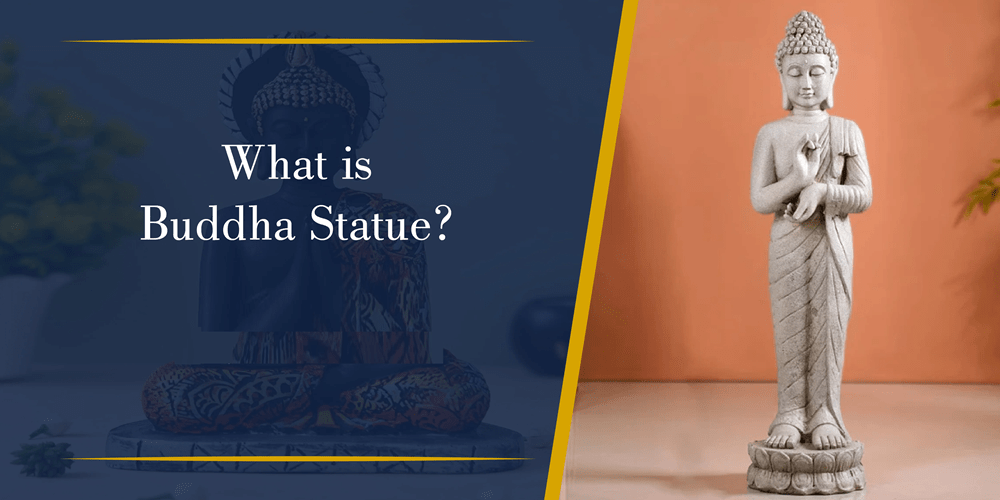
A Buddha statue is not merely a decorative item; it is a profound embodiment of spiritual symbolism and cultural heritage. The term “Buddha” refers to Siddhartha Gautama, the founder of Buddhism, who attained enlightenment under the Bodhi tree. A Buddha statue, crafted with precision and reverence, captures the essence of this enlightened being. These statues are crafted in various materials such as stone, wood, metal, and resin, each carrying its unique charm and significance.
Buddha statues commonly depict the serene countenance of the Buddha, often seated in meditation or engaged in various mudras (hand gestures). The presence of a Buddha statue in a home is believed to bring peace, harmony, and positive energy, making it a popular choice for those seeking a spiritual touch in their living spaces.
Types of Buddha Statue

· Buddha Head
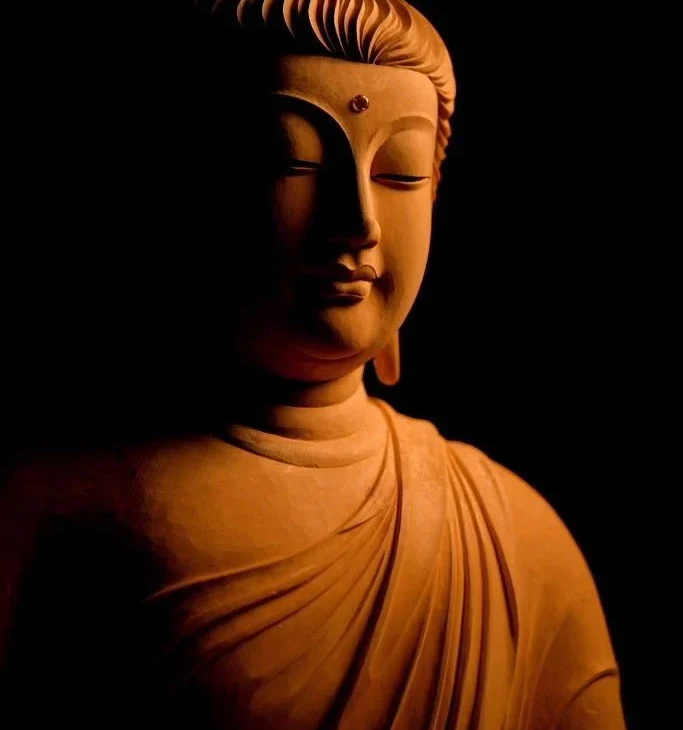
This type of Buddha statue focuses on the serene facial features of Buddha, symbolizing wisdom and enlightenment. Placing a Buddha head in your home signifies a quest for knowledge and spiritual awakening.
· Buddha Bust Idols

These sculptures depict the upper torso of Buddha, often with crossed arms. It signifies meditation and introspection, making it an ideal choice for spaces dedicated to tranquility and mindfulness.
· Standing Buddha
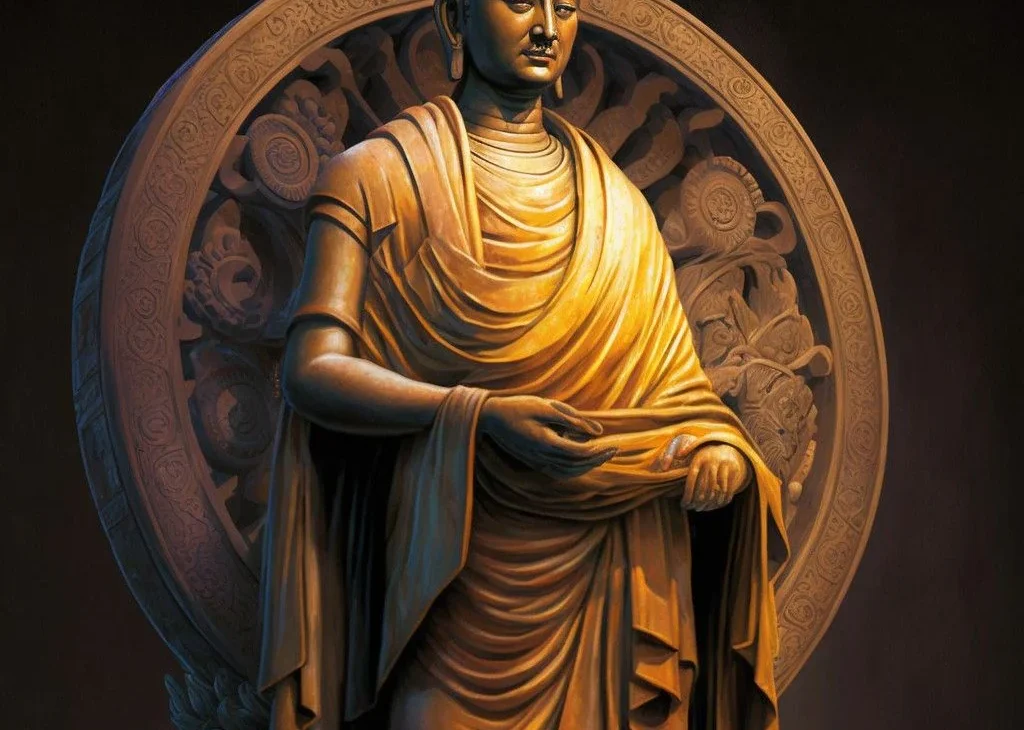
Representing Buddha in a standing posture, this Buddha statue symbolizes confidence, fearlessness, and the conquering of ignorance. Placing a standing Buddha in your home invokes a sense of strength and resilience.
· Thinking Buddha Idols
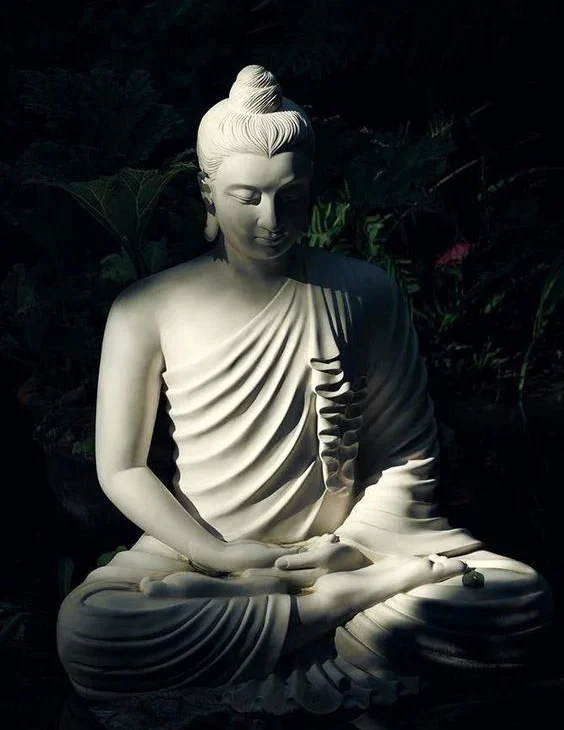
These statues portray Buddha in a thoughtful pose, with one hand supporting the chin. It reflects deep contemplation and mindfulness, making it suitable for spaces where introspection is encouraged.
· Meditation Buddha or Buddha in Dhyana Mudra
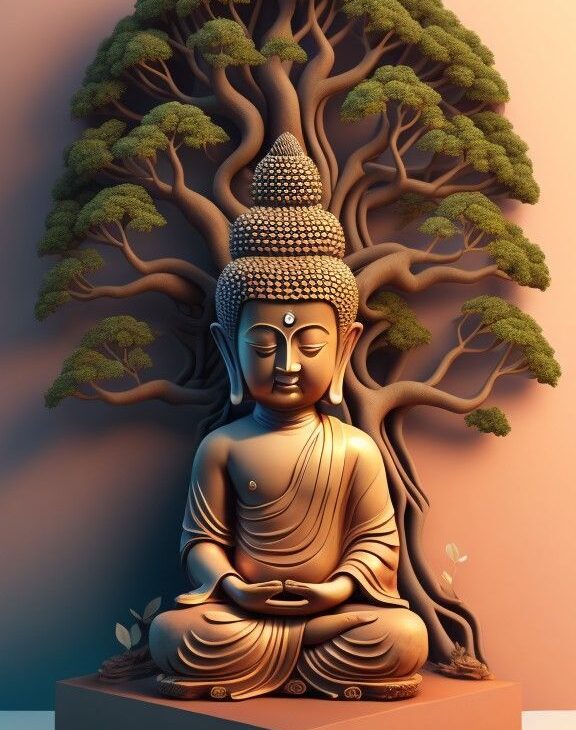
This popular type depicts Buddha in a seated meditation posture, promoting a sense of calm and inner peace. It is ideal for meditation spaces or areas designated for relaxation.
Benefits of Buddha Statue

- Promotes Serenity: A Buddha statue in your home acts as a visual reminder of tranquility, creating a peaceful atmosphere conducive to relaxation and stress reduction.
- Enhances Spiritual Awareness: The presence of a Buddha statue encourages spiritual contemplation, fostering a deeper connection with one’s inner self and a heightened sense of awareness.
- Symbolizes Wisdom: Buddha is the epitome of wisdom, and having a Buddha statue in your living space serves as a constant inspiration for seeking knowledge and making informed decisions.
- Attracts Positive Energy: Believers in Feng Shui and Vastu suggest that a Buddha statue attracts positive energy, dispelling negativity and promoting a harmonious environment.
- Inspires Mindfulness: The symbolic gestures (mudras) of Buddha statues, such as the Dhyana Mudra, inspire mindfulness and meditation, promoting mental clarity and focus.
Advantages of Buddha Statue

- Vastu Harmony: Placing a Buddha statue according to Vastu principles ensures the harmonization of energies in your home, leading to overall well-being and prosperity.
- Aesthetic Appeal: Apart from its spiritual significance, a Buddha statue adds an artistic touch to your decor, becoming a focal point that blends seamlessly with various design styles.
- Cultural Significance: For those embracing Buddhist philosophy or interested in Eastern cultures, a Buddha statue serves as a symbol of cultural appreciation and understanding.
- Conversation Starter: Buddha statues often spark conversations about spirituality, mindfulness, and art, making them excellent conversation starters in social settings.
- Versatility in Materials: Buddha statues come in various materials, including wood, metal, stone, and resin, offering flexibility in choosing a statue that complements the overall aesthetic of your home.
Buddha Statue for Home Vastu

Understanding the principles of Vastu is crucial for harnessing the positive energies associated with a Buddha statue in your home. Here are key considerations:
- Placement: According to Vastu, placing a Buddha statue facing the east or northeast direction is considered auspicious, inviting positive energy into your home. Avoid placing it in the bathroom or near cluttered spaces.
- Size Matters: The size of the Buddha statue should be proportionate to the room. A large statue in a small space may overpower the energy, while a small statue in a spacious room might not have the desired impact.
- Material Significance: Vastu emphasizes using specific materials for a Buddha statue. Brass and bronze are commonly recommended, believed to enhance positive vibrations in the space.
- Avoiding Distractions: Ensure that the Buddha statue is not surrounded by unnecessary clutter or distractions. A clean and serene environment amplifies the positive influence of the statue.
- Personal Connection: Vastu encourages individuals to choose a Buddha statue that resonates with them personally, fostering a stronger connection and amplifying the positive energies associated with the statue.
What Is the Buddha Statue Used For?

The application of a Buddha statue in your home extends beyond being a mere decorative piece. Here are some key uses:
- Meditation and Mindfulness: Placing a Buddha statue in a dedicated meditation space serves as a focal point for mindfulness practices, promoting mental clarity and inner peace.
- Spiritual Inspiration: For those on a spiritual journey or practicing Buddhism, a Buddha statue becomes a source of inspiration and a tangible representation of the path to enlightenment.
- Decorative Symbolism: Beyond its spiritual significance, a Buddha statue adds a touch of cultural and artistic symbolism to your home decor, blending seamlessly with various design styles.
- Positive Energy Attraction: Many believe that a Buddha statue attracts positive energy, serving as a protective and harmonizing force in the home environment.
- Educational Purpose: Families often use Buddha statues as a way to introduce children to different cultures and spiritual philosophies, fostering an early appreciation for diversity and mindfulness.
Benefits Of Metal Buddha Statue For Home

Choosing the material for your Buddha statue is a significant decision, and metal statues, in particular, offer unique advantages:
- Durability: Metal Buddha statues, crafted from materials like brass or bronze, are durable and resistant to wear and tear, ensuring a long-lasting addition to your home decor.
- Symbolic Significance: In Buddhism, metal is associated with the earth element, representing stability and strength. A metal Buddha statue, therefore, symbolizes a solid foundation for spiritual growth.
- Ease of Maintenance: Metal statues are relatively easy to clean and maintain. Regular dusting or gentle polishing can keep the statue looking pristine and vibrant.
- Versatility in Design: Metal allows for intricate detailing in the design of Buddha statues. This versatility ensures that you can find a metal Buddha statue that aligns with your aesthetic preferences.
- Energetic Properties: Followers of spiritual practices often believe that metal statues have unique energetic properties, contributing to the positive energy radiated by the Buddha statue in your home.
What Buddhist Sculpture Means for Your Collection
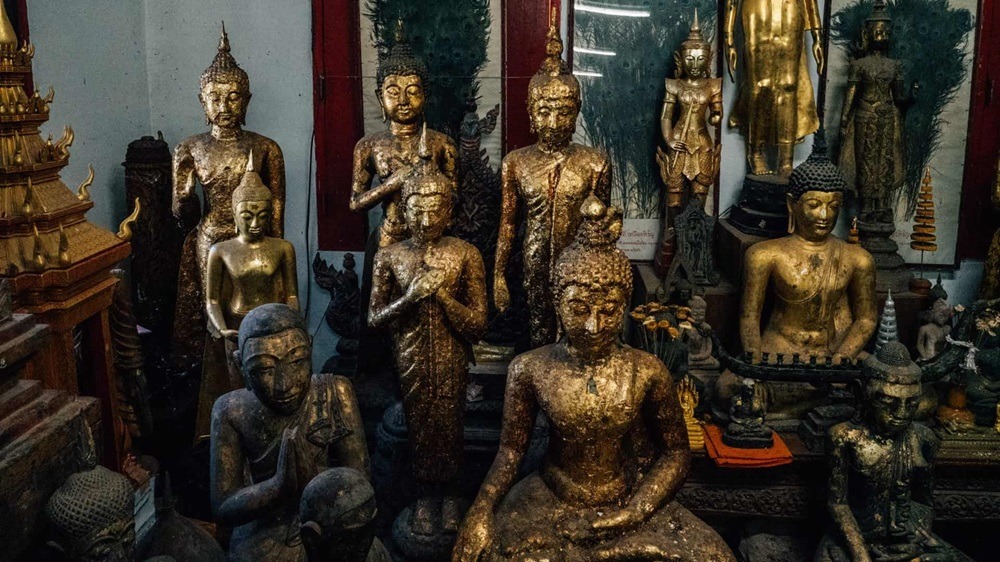
Including a Buddha statue in your art collection goes beyond aesthetic considerations. Here are reasons why Buddhist sculptures are valuable additions:
- Cultural Heritage: Buddhist sculptures are integral to the cultural heritage of various Asian countries. Owning one becomes a way to connect with and appreciate the rich history and traditions of these cultures.
- Artistic Expression: Buddhist sculptures showcase exquisite craftsmanship and artistic expression. Each statue tells a story, making it a meaningful and thought-provoking addition to your art collection.
- Spiritual Significance: Even for those not practicing Buddhism, a Buddhist sculpture can hold spiritual significance, representing universal themes of peace, compassion, and enlightenment.
- Conversations on Philosophy: These sculptures and Buddha statue often depict profound philosophical concepts. Owning one opens the door to meaningful conversations about life, spirituality, and the pursuit of inner peace.
- Symbol of Harmony: Placing a Buddhist sculpture among your art collection can symbolize a commitment to harmony, both within oneself and within the diverse array of artistic expressions that enrich our world.
What Are the Different Types Of Buddha Statues And Their Meanings?

Exploring the symbolism behind various types of Buddha statues reveals deep meanings and conveys unique messages:
- Buddha Head: The head symbolizes wisdom, knowledge, and the enlightenment of Buddha. Displaying a Buddha head in your home is a nod to the pursuit of wisdom.
- Buddha Bust Idols: The upper torso signifies meditation and introspection. It serves as a reminder to incorporate moments of reflection and mindfulness into daily life.
- Standing Buddha: Representing confidence and fearlessness, a standing Buddha statue is a visual affirmation of one’s strength and ability to overcome challenges.
- Thinking Buddha Idols: Depicting Buddha statue in a thoughtful pose, these statues encourage deep contemplation and introspection, making them ideal for spaces dedicated to reflection.
- Meditation Buddha or Buddha in Dhyana Mudra: This seated posture signifies tranquility and inner peace, making it perfect for meditation spaces or areas designated for relaxation.
Exploring the Symbolism of Buddha Statues and Their Meanings
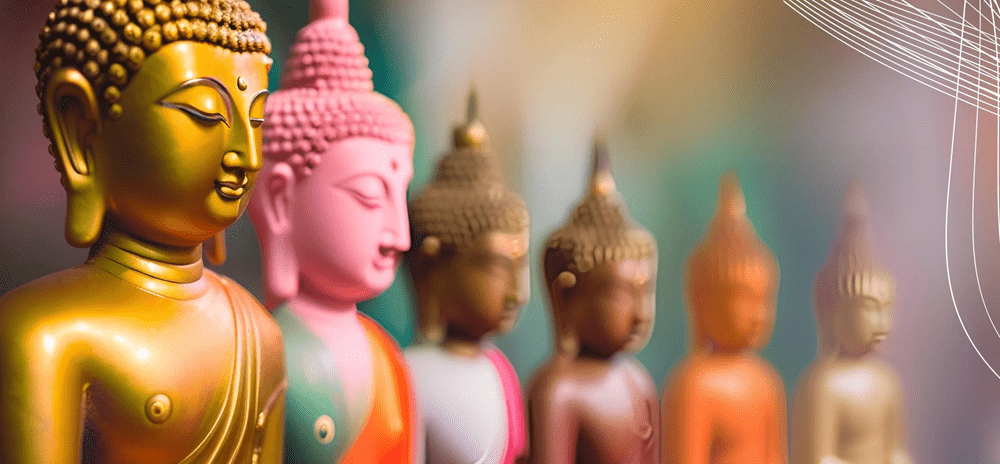
1. Buddha Head:
- Symbolism: Wisdom, enlightenment, and the pursuit of knowledge.
- Meaning: Placing a Buddha head in your space signifies a commitment to continuous learning and the pursuit of wisdom.
2. Buddha Bust Idols:
- Symbolism: Upper torso focuses on meditation and introspection.
- Meaning: These statues serve as reminders to incorporate moments of reflection and mindfulness into your daily life.
3. Standing Buddha:
- Symbolism: Confidence, fearlessness, and overcoming ignorance.
- Meaning: Displaying a standing Buddha statue is an affirmation of personal strength and the ability to conquer challenges.
4. Thinking Buddha Idols:
- Symbolism: Buddha statue in a thoughtful pose encourages contemplation.
- Meaning: Ideal for spaces dedicated to reflection, these statues inspire deep contemplation and introspection.
5. Meditation Buddha or Buddha in Dhyana Mudra:
- Symbolism: Seated posture signifies tranquility and inner peace.
- Meaning: Perfect for meditation spaces or relaxation areas, these statues promote a sense of calm and mindfulness.
6. Buddha in the Earth Touching Gesture or Bhumisparsha Mudra:
- Symbolism: Touching the earth represents enlightenment and steadfastness.
- Meaning: This gesture signifies Buddha’s enlightenment and determination, making it an excellent choice for spaces dedicated to focus and determination.
7. Preaching Buddha:
- Symbolism: The gesture of teaching and preaching.
- Meaning: Placing a Preaching Buddha statue in your home signifies openness to learning, knowledge sharing, and the pursuit of wisdom.
8. Resting Buddha or Mahaparinirvana Buddha:
- Symbolism: Represents the final nirvana or enlightenment.
- Meaning: Ideal for spaces where relaxation and a sense of completeness are desired, the Resting Buddha statue symbolizes the ultimate state of peace.
9. Crowned Buddha Statues:
- Symbolism: The crown signifies royalty and spiritual authority.
- Meaning: Placing a Crowned Buddha in your home reflects a connection to divine authority and spiritual leadership.
Conclusion
In the intricate tapestry of home decor, the Buddha statue emerges not merely as an artifact but as a profound symbol of tranquility, wisdom, and cultural heritage. As we’ve explored the diverse types, benefits, and advantages associated with Buddha statues, it becomes evident that these sculptures are more than ornamental additions. They are gateways to mindfulness, embodiments of spiritual teachings, and symbols of universal values.
Choosing a Buddha statue for your home involves a thoughtful consideration of its type, material, and placement, guided by principles such as Vastu and Feng Shui. The benefits, both aesthetic and spiritual, contribute to the statue’s enduring popularity across various cultures and belief systems.
The rich diversity in Buddha statues, from the contemplative expressions of the Buddha head to the dynamic poses of a Standing Buddha, allows for a personalized and meaningful selection. Each type carries a unique symbolism, providing homeowners with the opportunity to curate a space that aligns with their values and aspirations.
Beyond the individual significance of each Buddha statue, the collective presence of these sculptures in a home creates an ambiance of serenity, mindfulness, and cultural appreciation. Whether you’re drawn to the meditative qualities of a seated Buddha statue or the regal presence of a Crowned Buddha, the choices are as diverse as the spiritual journey itself.
FAQ’s
Q. Why Do Buddhists Have Statues?
Ans: Buddhists have statues as physical representations of the Buddha, serving as focal points for devotion, meditation, and reflection. These statues embody the Buddha’s teachings, providing a tangible reminder of the path to enlightenment and the values central to Buddhism.
Q. What is the Purpose of Keeping a Buddha Statue at Home?
Ans: Keeping a Buddha statue at home serves various purposes. It is believed to attract positive energy, promote tranquility, and inspire mindfulness. The statue can also act as a symbol of cultural appreciation, fostering a connection to Buddhist philosophy and heritage. Additionally, for those practicing meditation, a Buddha statue provides a focal point for spiritual reflection.
Q. What is the Point of Having a Buddha Statue in Your Home?
Ans: The presence of a Buddha statue in your home goes beyond aesthetics. It symbolizes a commitment to inner peace, wisdom, and spiritual growth. The statue acts as a visual reminder of core Buddhist principles, creating a serene environment conducive to mindfulness and positive energy.
Q. What is the Meaning of the Buddha?
Ans: The term “Buddha” means “enlightened one” or “awakened one.” In Buddhism, it specifically refers to Siddhartha Gautama, who achieved enlightenment under the Bodhi tree. The Buddha represents the embodiment of wisdom, compassion, and the path to liberation from suffering.
Q. Which is the Important Buddha Statue?
Ans: Different Buddha statues hold significance based on individual preferences and spiritual inclinations. However, the Meditation Buddha, symbolizing inner peace, and the Standing Buddha, representing confidence, are often considered important for their positive and empowering symbolism.
Q. Why is the Buddha Important?
Ans: The Buddha is important because he is the central figure in Buddhism, providing teachings that guide followers on the path to enlightenment and liberation from suffering. The Buddha’s wisdom and compassion serve as a source of inspiration, offering profound insights into the nature of existence and the pursuit of a meaningful life.
Q. Why Are Buddha Eyes Half Open?
Ans: The half-closed or half-open eyes of Buddha eyes, commonly seen in Buddhist art, represent a state of meditation and inner concentration. This symbolic gesture signifies the balance between active observation and internal contemplation, reflecting the Buddha’s enlightened state of mind.
Q. What is the Full Story of Buddha?
Ans: The full story of the Buddha, Siddhartha Gautama, involves his birth as a prince, his renunciation of worldly comforts, and his quest for spiritual enlightenment. After years of meditation, he attained enlightenment under the Bodhi tree, becoming the Buddha. His teachings, known as the Dharma, form the foundation of Buddhism.
Q. Who Was Called Buddha?
Ans: Siddhartha Gautama, born in ancient India, is called the Buddha. He was a prince who, upon witnessing human suffering, renounced his royal life in search of spiritual truth. After years of meditation and self-discipline, he attained enlightenment and became known as the Buddha, the founder of Buddhism. His teachings continue to inspire millions worldwide.













